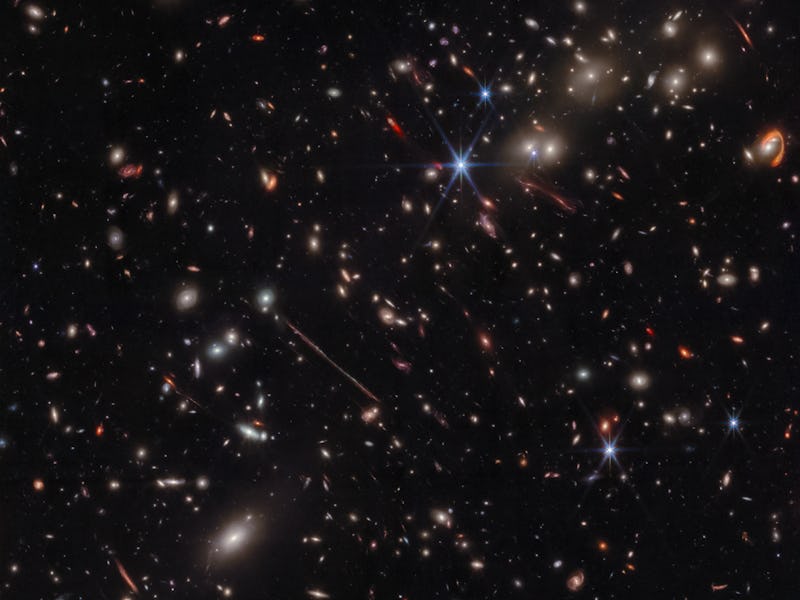Stunning “El Gordo” Webb Telescope Image is a Bounty of Early Universe Science
The James Webb Space Telescope peered into a mighty galaxy cluster called “El Gordo.”

In an image description NASA published on Wednesday, the space agency showcases a galaxy cluster and its vibrant science cornucopia.
Astronomers can piggyback off galaxy clusters, like one called “El Gordo” (The Fat One), to peer deep into the distant universe. The hundreds of galaxies packed together wield a heavy concentration of mass, and if astronomers look towards a cluster on the hunt for sluggish or worm-like features, they might stumble upon light from the ancient past.
The superpower of “El Gordo” is gravitational lensing, a phenomenon that magnifies and warps light trying to reach Earth from farther away. According to comments from Brenda Frye, co-lead of the clusters branch of the JWST Prime Extragalactic Areas for Reionization and Lensing Science (PEARLS) team, “lensing by El Gordo boosts the brightness and magnifies the sizes of distant galaxies,” and “provides a unique window into the distant universe.”
“El Gordo” is on the left. “La Flaca” is highlighted in the top right box. “El Anzuelo” is highlighted at the bottom right.
What appears in the JWST image of “El Gordo”?
Look at the upper right part of “El Gordo”, and there appears “El Anzuelo” (The Fishhook). It is red, in part because the universe has expanded since this light began its journey. The infrared instruments onboard JWST are well-suited to discerning light that has been subjected to this stretch known as cosmological redshift.
The light from “El Anzuelo” came from 10.6 billion years in the past, much farther back in time than light from the galaxy cluster. “El Gordo” contains galaxies whose light is just 6.2 billion years old.
Once astronomers reconstructed “El Anzuelo” from the lensing, they found evidence of nuanced star formation and a look from the inside out.
Another lensed galaxy appears left of center. This thin line, called “La Flaca” (The Thin One), is light that took 11 billion years to reach Earth.
In another lensed galaxy, the sensitive telescope found Quyllur, named for the Quechua term for star. Quyllur is “the first individual red giant star observed beyond 1 billion light-years from Earth,” NASA officials write in the image description.
What comes next?
“El Gordo” is packed with science still unconfirmed. One exciting prospect is that the galaxy cluster is also revealing a young and ancient galaxy cluster that emerged when the 13.7-billion-year-old universe was a little more than a billion years old.
“While additional data are required to confirm that there are 17 members of this cluster, we may be witnessing a new galaxy cluster forming right before our eyes,” Frye shares. Frye was the lead author of one of several papers recently published about “El Gordo.” Another paper detailed “El Anzuelo,” and one paper describes a lens model. The final paper pertains to investigations of ultra-diffuse galaxies, where stars are spread out widely in space.
The best is probably yet to come, but for now, astronomers using gravitational lensing and JWST are excited about unpacking the existing plethora of science.